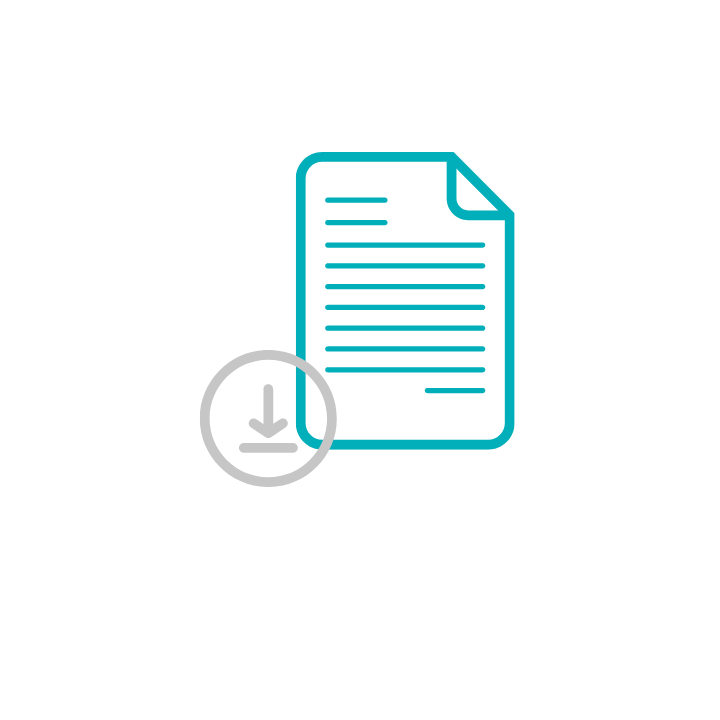Two of the most common questions we get asked about overheating wheels are:
How to check a wheel that shows a black heat indicator?
How do you prevent overheating in the first place?
HOW WHEELS ARE AFFECTED BY TYRES OVERHEATING
Doug Mason | Global Technical Manager at Howmet Wheel Systems, explains: “The main issue is that wheels are essentially aluminium that has been heat treated – in other words, its strength is imparted by going through a special thermal process during the manufacture of the wheel”.
“If you take the wheel to too high of a temperature out on the road, you can undo some of the strengthening that has occurred during the processing of the wheel, and then the open end of the wheel can reduce in size.”
When the open end of the wheel is reduced in size, there is a potential for the tyre to not seat properly, and possibly come right off, causing a very unsafe situation for the driver.
IF YOU’RE HAVING BEADS BURN UP, YOUR WHEEL IS LIKELY OVERHEATING TOO
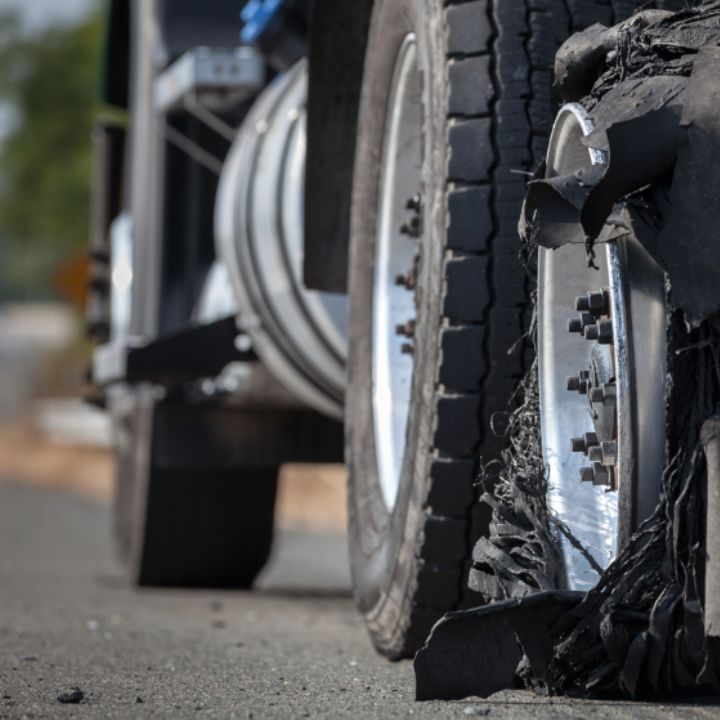
Dave Walters | Manager of Warranty and Field Service for Alcoa Wheels suggests that when it comes to tyres, if the tyre reaches up to 146°C (295°F), you’re going to start affecting the bead of the tyre.
“A steel or aluminium wheel can go past that temperature, fortunately, but at 204°C (400°F) for five minutes, that’s when you could have an issue with the wheel itself,” explains Dave.
Walters suggests that, if you’re noticing that your tyre beads are burning up, it’s important to look at the wheel too because that wheel will be taking a lot of heat as well.
“The tyres will go first,” confirms Dave, “But if you’re having tyre issues with bead issues, definitely start looking into the wheel and seeing how much heat the wheel’s getting.”
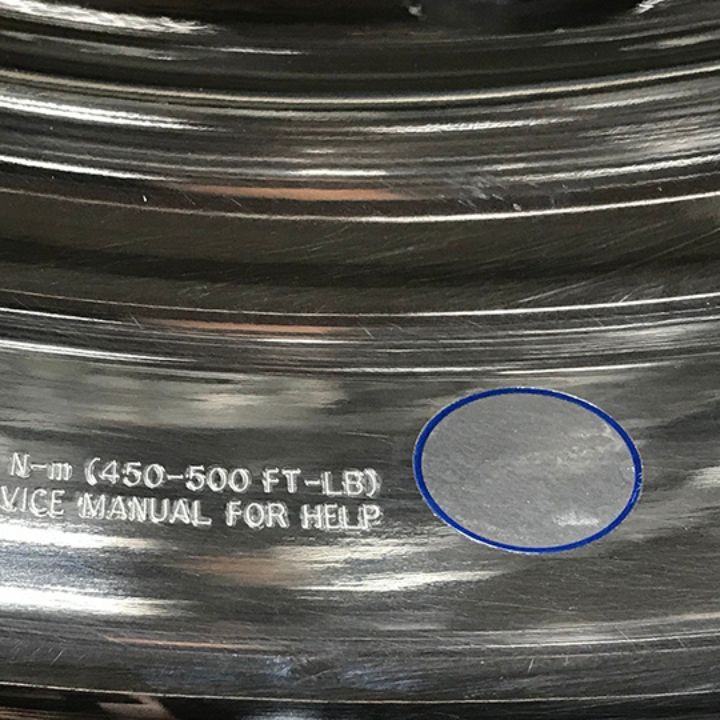
The Alcoa Wheels heat indicator located near the roll stamp will turn black if the wheel has become overheated.
CHECKING A WHEEL WHEN THE HEAT INDICATOR IS BLACK
Alcoa wheels come manufactured with a heat indicator so that drivers can have a clear indication of when the wheel has overheated.
How the heat indicator works is that if the wheel is heated to 400°F (204°C) for a period of 5 minutes, then sticker will turn brown first.
The rule of thumb is that if that sticker turns black, the wheel must immediately be removed from service.
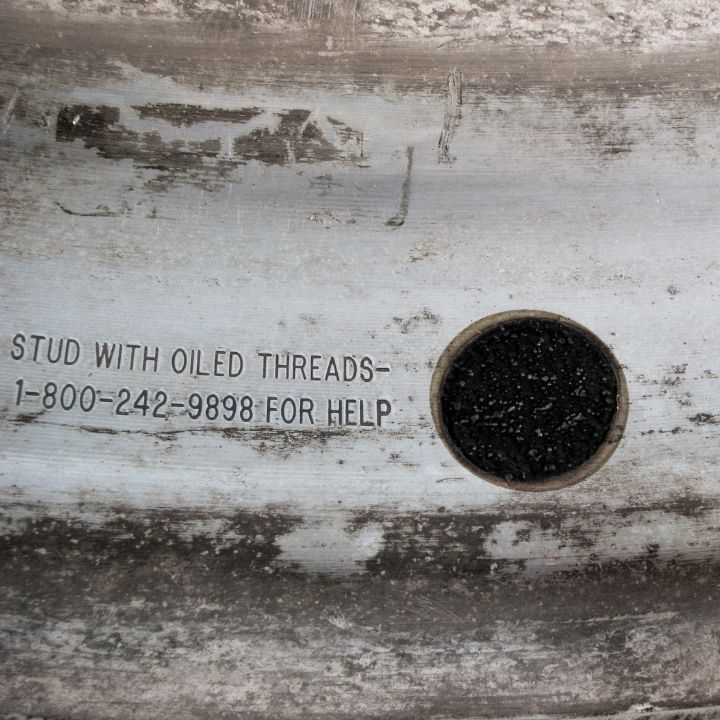
The Alcoa Wheels heat indicator that turns black to indicate overheating of the wheel.
WHERE TO FIND HEAT INDICATORS ON ALCOA WHEELS
Forged aluminium wheels manufactured from January 2009 will have a 25mm clear, round heat indicator located next to the roll stamp on the inside, as well as a similar 25mm clear round heat indicator on the tyre side drop well.
If either of these round labels show signs of blistering, or have a charred, blackened, or cracked appearance, this may indicate the wheel has been exposed to excessive heat.
If the indicator shows any of the above signs, get the wheel out of service immediately so that it can be checked.
MEASUREMENTS TO CARRY OUT WHEN THE HEAT INDICATOR STICKER IS BLACK
There are 3 measurements or checks that can be carried out when a wheel’s heat indicator is showing black. This will determine whether the wheel is safe to return to service.
METHOD 1: ROLL THE WHEEL ON A FLAT SURFACE
Roll the wheel on a flat surface, if the wheel starts to turn – and it’s always going to turn to the open end if it’s not rolling in a straight line – then you know you have an issue.
Dave recommends rolling the wheel for about 8 feet on a flat surface.
“If you don’t have a flat surface, the next best method is simply a carpenter square,” he adds.
METHOD 2: USE A CARPENTER SQUARE TO CHECK THE WHEEL
If the carpenter square goes up and over the wheel, put that on the face of the wheel and measure to make sure you cannot fit 30,000ths of an inch (0.76mm) in between the open end and the carpenter square.
30,000ths is about the thickness of a credit card or Driver’s License.
Carry out this check in at least four spots.
METHOD 3: USE RPA TAPE TO CHECK THE WHEEL
The best method is to purchase a Ball Tape. The Ball Tape will give the most accurate information.
The Alcoa service manual details the three methods above with very clear pictures.
“It’s all about safety first,” says Dave. “If you see a brown indicator, measure it, just to be sure. If you see tyre bead issues, measure it. If you see a black indicator, then definitely measure it. We’ve seen too many people not following OSHA regulations out in the field – for example, putting a tyre on a damaged wheel. That tyre’s going to come off and someone will be at risk.”
ALCOA WHEELS HAVE TWO HEAT INDICATORS FOR EXTRA SAFETY
There are actually two heat indicators on an Alcoa wheel: one near the roll stamp on the outside of the wheel, and another is inside the tyre chamber (the tyre cavity area in the drop wall of the wheel).
They are in different areas for different reasons, of course, but it is helpful to be able to check the other if one is no longer functional.
PREVENTING OVERHEATING OF ALCOA WHEELS
Truck wheels are subject to a lot of wear and tear. The weight of the truck, combined with the friction from the road, can cause the wheels to heat up.
There are several things you can do to prevent your truck wheels from overheating:
- MAKE SURE TYRES ARE INFLATED TO THE PROPER PRESSURE – When a tyre is underinflated, there is more contact between the tyre and the ground. This causes more friction, which in turn generates more heat.
- AVOID OVERLOADING THE TRUCK AND TRAILER – When a truck combination is carrying extra weight, it puts more strain on the tyres and causes them to work harder, creating more heat.
- AVOID BRAKING EXCESSIVELY OR MAKING SUDDEN STOPS – When you brake, the friction from the pads against the rotors slows the wheel down. This generates a lot of heat, which can build up over time and cause unwanted damage to the tyres or wheels.
- SLOW DOWN WHEN DRIVING ON HOT DAYS – On hot days, the faster you drive, the more wind resistance there is, which can cause the tyres to overheat quicker.
- USE A LOWER GEAR WHEN GOING UP HILLS – Using a lower gear when going up hills will also reduce the amount of friction.
- GET YOUR TRUCK SERVICED REGULARLY – Regular services ensure the brakes are in good condition and not a risk for overheating your tyres.
By following these practices will help keep your truck and trailer wheels from overheating and extend their lifespan.
LISTEN TO THE ALCOA WHEELS EXPERTS SHARE THEIR ALMOST 100 YEARS OF WHEEL EXPERIENCE ON ALL THINGS AXLE-ENDS
To hear more from Alcoa Wheels experts on how overheating affects your truck and trailer wheels, check out this Behind the Wheels Podcast episode How Heat Buildup Impacts Your Wheels.
Make Sure It’s An Alcoa® Wheel
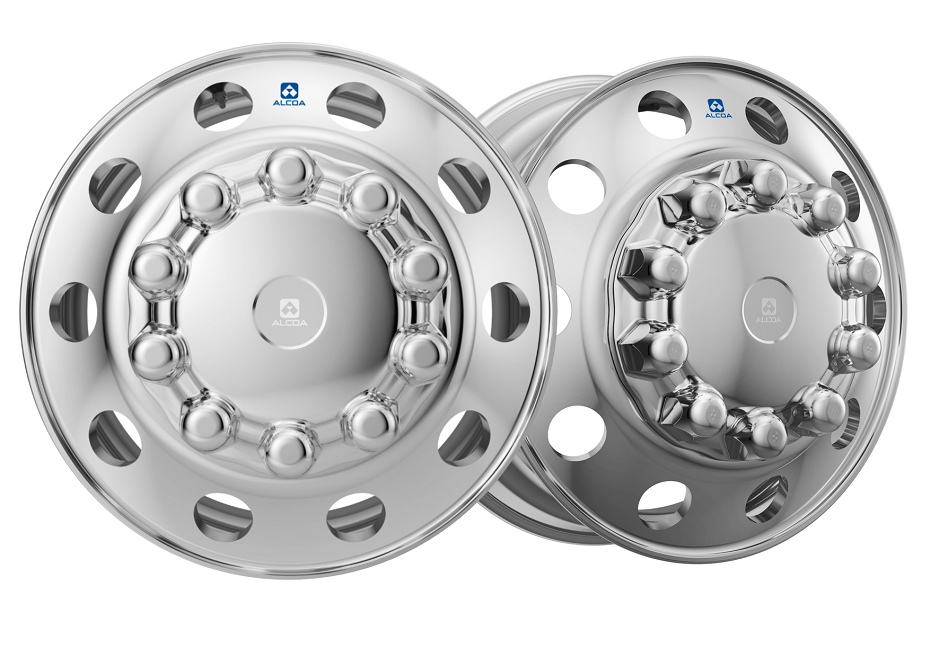
To spec your wheels, ring ![]() 1800 955 191 to talk with our wheel experts, or fill out a contact form and we will reach out to you to answer your questions and discuss your specifications.
1800 955 191 to talk with our wheel experts, or fill out a contact form and we will reach out to you to answer your questions and discuss your specifications.


